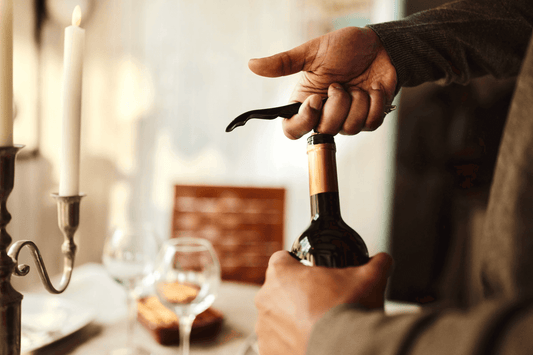
Types of Sparkling Wine: A Complete Guide to Every Bubbly You Should Know
There’s just something about the pop of a cork and the cheerful bubbles dancing in a glass! Sparkling wine instantly brings to mind celebrations, milestones, and a touch of everyday luxury. While many immediately think of Champagne, the world of sparkling wine is diverse, from crisp bottles in France to fruity fizz in Italy and bold styles from Spain. Let’s take a closer look at the different types of sparkling wine that can make each sip feel special.
What Is Sparkling Wine?
At its core, sparkling wine is all about that delightful fizz, which comes from the carbon dioxide bubbles trapped inside the bottle. This charming effervescence is typically the result of a secondary fermentation, which can occur either in the bottle (the traditional method) or inside large steel tanks. The choice of method plays a key role in shaping those bubbles’ texture and the wine’s overall personality.
Key Characteristics of Sparkling Wine
- Effervescence: The defining characteristic, ranging from gentle fizzante to intense spumante.
- Acidity: Generally high, contributing to the wine’s crisp and refreshing quality.
- Aromatics: A wide spectrum, often including fruit (citrus, apple, pear), floral notes, and autolytic characteristics (biscuit, toast, yeast) from ageing on lees.
- Sweetness Levels: Vary greatly, from bone dry (Brut Nature) to very sweet (Doux).
- Body: Depending on the grape varieties and production methods, it can range from light and delicate to richer and more full-bodied.
Popular Types of Sparkling Wine
Sparkling wine is a world of flavours that goes well beyond Champagne! From fruity to dry and everything in between, each style showcases its unique region, grapes, and production methods. Whether you're celebrating a special occasion or simply keen to try something new, understanding the different types of sparkling wine will help you choose the perfect bubbly for any event.
| The 5 Most Popular Types of Sparkling Wine | |||
|---|---|---|---|
| White Wine Type | Notable Regions | Taste & Structure | Best Food Pairings |
| Champagne | France (Champagne) | Dry, fine bubbles; citrus, toast, brioche | Oysters, lobster, rich cheese, fried foods |
| Cava | Spain (Catalunya) | Dry, crisp, softer bubbles; citrus, almond | Tapas, Manchego cheese, paella, croquettes |
| Prosecco | Italy (Veneto) | Light, fruity, pear, apple, floral | Antipasti, sushi, fresh salads, fruit-forward desserts |
| Asti Spumante | Italy (Piedmont) | Sweet, low alcohol; peach, apricot, blossom | Cheesecake, panna cotta, fruit tarts, holiday brunch |
| Crémant | France (Alsace, Loire, etc.) | Dry, creamy; varies by region | Brie, smoked salmon, quiche, fried appetisers |
Now that you’ve got the big picture, let’s explore each type in more detail, from flavour notes to food pairings and what makes each unique.
Champagne
- Notable Regions: Champagne, France (exclusively)
- Taste & Structure: High acidity, fine bubbles, dry (Brut), with flavours of citrus, toast, almond, brioche
- Food Pairing: Oysters, lobster, rich cheese, fried foods
Champagne, the much-loved sparkling wine from France, is made with care in the picturesque Champagne region using the traditional méthode champenoise. This exquisite drink features a lovely blend of Chardonnay, Pinot Noir, and Pinot Meunier grapes. Known for its gorgeous bubbles, refreshing acidity, and enjoyable notes of toast and citrus, Champagne embodies a sense of elegance, making it the ideal choice for celebrating those special moments.
Cava
- Notable Regions: Catalunya, Spain (especially Penedès); also parts of Rioja and Aragón
- Taste & Structure: Dry and crisp with medium-to-high acidity, citrus and nutty notes, lively but less intense bubbles than Champagne
- Food Pairing: Tapas, Manchego cheese, paella, croquettes
Cava brings a Spanish twist to sparkling wine, mainly hailing from the region of Catalonia. This fizzy treat is made from exquisite local grapes like Macabeo, Xarel-lo, and Parellada. Crafted using the traditional method of in-bottle fermentation, just like Champagne, Cava delights with its lively bubbles, bright citrus flavours, and nutty undertones. It strikes a balance that's perfect for enjoying with tapas or simply sipping any day of the week!
Prosecco
- Notable Regions: Veneto and Friuli-Venezia Giulia, Italy
- Taste & Structure: Light, fruity, with gentle bubbles (frizzante or spumante), flavours of pear, green apple, and white flowers
- Food Pairing: Antipasti, sushi, fresh salads, fruit-forward desserts
Prosecco, the wallet-friendly bubbly from Italy, is made from Glera grapes using the Charmat method. This technique gives it softer bubbles while beautifully preserving its fresh flavours. With its light floral notes and a subtle hint of sweetness, it’s ideal for casual get-togethers, pairing perfectly with tasty antipasti or for those curious about sparkling wine for the first time.
Asti Spumante
- Notable Regions: Piedmont, Italy (Asti region)
- Taste & Structure: Sweet and low in alcohol; highly aromatic with peach, apricot, and orange blossom
- Food Pairing: Cheesecake, panna cotta, fruit tarts, holiday brunch
Asti Spumante comes from the stunning Piedmont region of Italy, offering a lovely sweetness and a pleasantly low alcohol content that makes it incredibly easy to enjoy. With its charming peachy and floral aromas, this sparkling wine, crafted from Moscato Bianco grapes, presents gentle bubbles and a rich fruitiness. It’s a fantastic choice for pairing with desserts or simply savouring during festive brunches!
Crémant
- Notable Regions: Loire, Alsace, Burgundy, Jura, and other parts of France; Luxembourg
- Taste & Structure: Dry with creamy texture, fine bubbles, variable flavours depending on region and grapes
- Food Pairing: Brie, smoked salmon, quiche, fried appetisers
Crémant is France’s charming answer to Champagne, typically produced in beautiful regions such as Alsace and the Loire. Each distinct style highlights its unique grapes: Chenin Blanc brings a lovely honeyed richness, while Pinot Blanc adds a hint of delicacy. Crémant genuinely offers quality and character, often at a friendlier price point!
💡 Not sure which sparkling wine suits your taste, budget, or special occasion?
Don’t miss our beginner-friendly guide: How to Choose Sparkling Wine. It covers sweetness levels, grape types, food pairings, and even canned options to help you confidently find the perfect bottle!
Which Sparkling Wine Should I Buy: The Joy of Canned Wine
Canned sparkling wine is rapidly becoming a beloved choice for wine enthusiasts, and it’s easy to see why! It provides all the delightful fizz and flavour you adore in traditional bottles, but with the added perk of convenience and a modern flair.
✨ Why try canned sparkling wine?
- Portable & lightweight: perfect for picnics, festivals, and outdoor gatherings
- No glassware needed: just chill, pop, and enjoy
- Single-serve format: stay fresh, reduce waste
- Eco-friendly packaging: recyclable cans, lower carbon footprint
- No compromise on quality: modern canning tech preserves bubbles and aroma
So, if you’re looking for something festive, flexible, and refreshingly modern, canned sparkling wine is a delightful upgrade for your next celebration or casual sip!
Browse our curated selection of premium canned sparkling wines, and find your new favourite, one can at a time! 🛒 Explore Canned Sparkling Wines!
Conclusion
Discovering the different varieties of sparkling wine takes you into a delightful world filled with flavour, tradition, and, of course, bubbles! From the refreshing crispness of dry options to the luscious sweetness of aromatic blends, each style adds its special touch. Whether you’re a long-time aficionado or just beginning your wine adventure, there’s always a perfect bottle of bubbly waiting to be enjoyed!
FAQ
1. What are the main types of sparkling wine?
The main types of sparkling wine include Champagne, Prosecco, Cava, Asti Spumante, and Crémant. Each has a unique production method, grape variety, and flavour profile.
2. What is the difference between Champagne and Prosecco?
Champagne is made in France using the traditional method, creating fine bubbles and complex flavours. Prosecco, from Italy, uses the tank method and tends to be fruitier and more approachable.
3. Is sparkling wine the same as Champagne?
No. All Champagne is sparkling wine, but not all sparkling wine is Champagne. Champagne must come from the Champagne region and follow strict production rules to be classified as Champagne.



